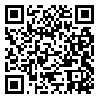Volume 15, Issue 6 (Feb & Mar 2022)
payavard 2022, 15(6): 585-594 |
Back to browse issues page
Ethics code: IR.TUMS.SPH.REC.1399.320
Download citation:
BibTeX | RIS | EndNote | Medlars | ProCite | Reference Manager | RefWorks
Send citation to:



BibTeX | RIS | EndNote | Medlars | ProCite | Reference Manager | RefWorks
Send citation to:
Safdari R, Allameh S F, Shabani F. Determining Data Elements to Develop a Self-Care Application for Biliary Patients. payavard 2022; 15 (6) :585-594
URL: http://payavard.tums.ac.ir/article-1-7150-en.html
URL: http://payavard.tums.ac.ir/article-1-7150-en.html
1- Professor, Department of Health Information Management, School of Allied Medical Sciences, Tehran University of Medical Sciences, Tehran, Iran
2- Associated Professor, Department of Internal Medicine, School of Medicine, Tehran University of Medical Sciences, Tehran, Iran
3- Master of Science in Health Information Technology, School of Allied Medical Sciences, Tehran University of Medical Sciences, Tehran, Iran ,shabani0207@gmail.com
2- Associated Professor, Department of Internal Medicine, School of Medicine, Tehran University of Medical Sciences, Tehran, Iran
3- Master of Science in Health Information Technology, School of Allied Medical Sciences, Tehran University of Medical Sciences, Tehran, Iran ,
Abstract: (1631 Views)
Background and Aim: Many risk factors can cause biliary system diseases. Hence, this category of diseases is amongst the most common ones. Active patient cooperation is very important in disease management, self-care, and clinical outcomes improvement. A mobile phone application has a high potential in supporting the patients’ self-management. Therefore, this study was conducted to recognize and define data elements to develop a self-care application for biliary patients.
Materials and Methods: The current descriptive study was conducted in 2 stages, resource investigation, and data elements’ need assessment. In the first stage, scientific articles available in databases were used for defining required data elements to develop the application for biliary patients, and a checklist of data elements was prepared. In the second stage, a questionnaire was made based on the checklist. Content and face validity were accepted by the research team and the reliability was calculated 87.2%, using the Cronbach’s alpha test. The mentioned questionnaire was given to Gastroenterologists at Imam Khomeini Hospital complex, and the elected data elements were recognized.
Results: In this application, data elements were categorized into seven sections, including demographic and clinical information, data related to the biliary system diseases, postoperative lifestyle information of the biliary patients, reminders, disease management, and informing. Sixty point five percent of the responders gave the highest importance to data elements in the demographic and clinical data section. Data elements related to patients’ education were considered highly important by 54.2% of the responders. Forty three point eight percent gave the highest importance to data elements in interventional applications’ sections, and only 4.2% gave the least importance to this section.
Conclusion: Based on the identified data elements, a self-care application was designed and developed and can be used as a supplement to specialized care for biliary patients.
Materials and Methods: The current descriptive study was conducted in 2 stages, resource investigation, and data elements’ need assessment. In the first stage, scientific articles available in databases were used for defining required data elements to develop the application for biliary patients, and a checklist of data elements was prepared. In the second stage, a questionnaire was made based on the checklist. Content and face validity were accepted by the research team and the reliability was calculated 87.2%, using the Cronbach’s alpha test. The mentioned questionnaire was given to Gastroenterologists at Imam Khomeini Hospital complex, and the elected data elements were recognized.
Results: In this application, data elements were categorized into seven sections, including demographic and clinical information, data related to the biliary system diseases, postoperative lifestyle information of the biliary patients, reminders, disease management, and informing. Sixty point five percent of the responders gave the highest importance to data elements in the demographic and clinical data section. Data elements related to patients’ education were considered highly important by 54.2% of the responders. Forty three point eight percent gave the highest importance to data elements in interventional applications’ sections, and only 4.2% gave the least importance to this section.
Conclusion: Based on the identified data elements, a self-care application was designed and developed and can be used as a supplement to specialized care for biliary patients.
Send email to the article author
| Rights and permissions | |
 |
This work is licensed under a Creative Commons Attribution-NonCommercial 4.0 International License. |





